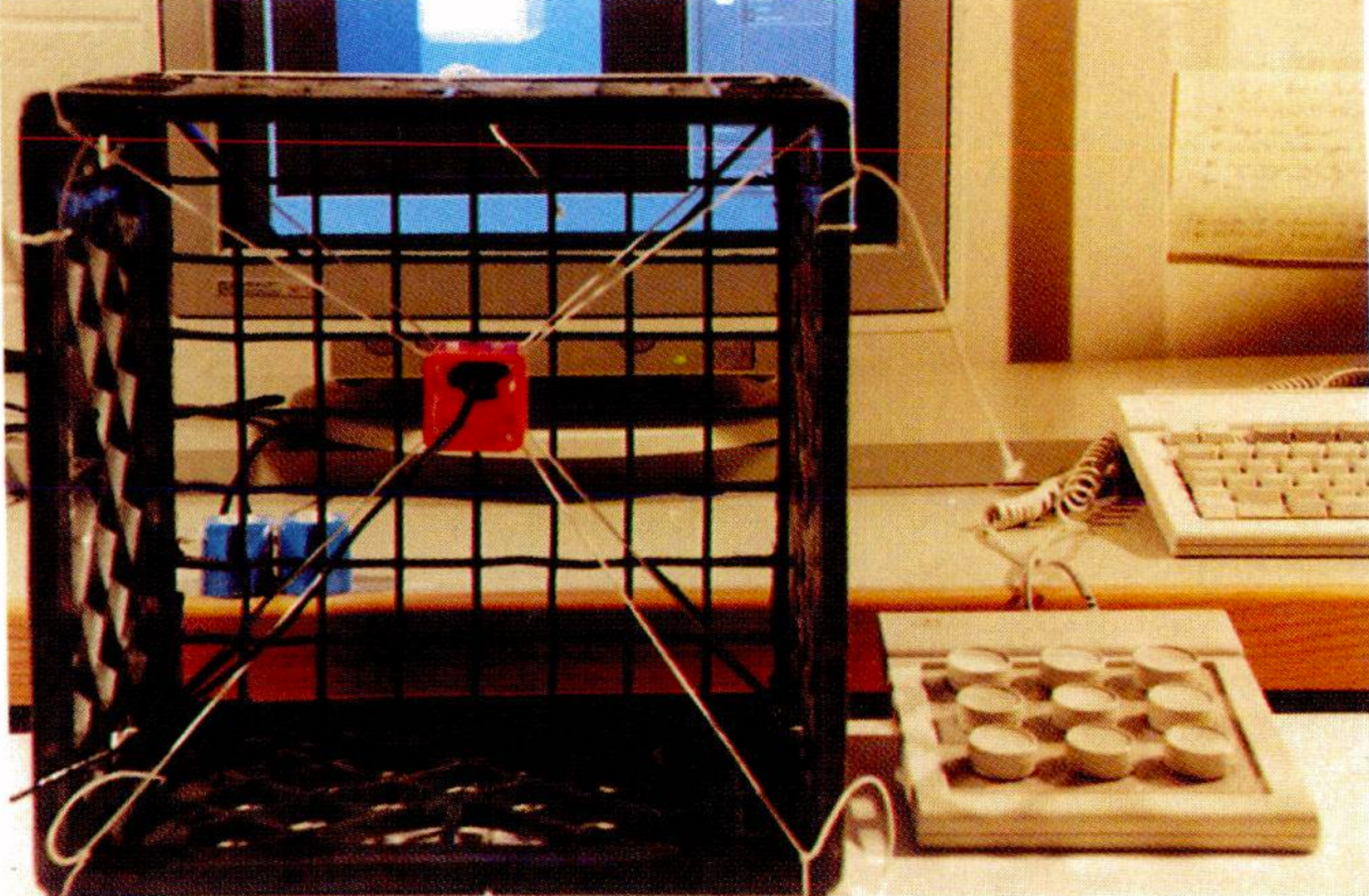“Sculpting: an interactive volumetric modeling technique” by Galyean and Hughes
Conference:
Type(s):
Title:
- Sculpting: an interactive volumetric modeling technique
Presenter(s)/Author(s):
Abstract:
We present a new interactive modeling technique based on the notion of sculpting a solid material. A sculpting tool is controlled by a 3D input device and the material is represented by voxel data; the tool acts by modifying the values in the voxel array, much as a “paint” program’s “paintbrush” modifies bitmap values. The voxel data is converted to a polygonal surface using a “marching-cubes” algorithm; since the modifications to the voxel data are local, we accelerate this computation by an incremental algorithm and accelerate the display by using a special data structure for determining which polygons must be redrawn in a particular screen region. We provide a variety of tools: one that cuts away material, one that adds material, a “sandpaper” tool, a “heat gun,” etc. The technique provides an intuitive direct interaction, as if the user were working with clay or wax. The models created are free-form and may have complex topology; however, they are not precise, so the technique is appropriate for modeling a boulder or a tooth but not for modeling a crankshaft.
References:
1. J.E Blinn. A generalization of algebraic surface drawing. ACM TOG, 1(3):235-256, 1982.
2. J. Bloomenthal and B. Wyvill. Interactive techniques for implicit modeling. Computer Graphics, 24(2):109-116, March 1990.
3. S. Coquillart. Extended free-form deformation: A sculpting tool for 3d geometric modeling. Computer Graphics, 24(4):187-196, August 1990.
4. J. Foley, A. van Dam, S. Feiner, and J. Hughes. Computer Graph!cs: Principles and Practice. Addison-Wesley, second edition, 1990.
5. P.S. Heckbert. Filtering by repeated integration. Computer Graphics, 20(4):315-321 ,August 1986.
6. T. Van Hook. Real-time shaded nc milling display. Computer Graphics, 20(4): 15-20, August 1986.
7. W.E. Lorenson and H.E. Cline. Marching cubes: A high resolution 3d surface construction algorithm. Computer Graphics, 21(4):163-169, July 1987.
8. M. Minsky, M. Ouh-young, O. Steele, and E Brooks. Feeling and seeing: Issues in force display. Computer Graphics, 24(2):235-243, March 1990.
9. B. E Naylor. Sculpt: An interactive solid modeling tool. in Proceedings of Graphics Interface ’90, pages 138-148, May 1990.
10. A. Pentland, I. Essa, M. Friendmann, B. Horowitz, and S. Sclaroff. The thingworld modeling system: Virtual sculpting by modal forces. Computer Graphics, 24(2):143-146, March 1990.
11. K. Perlin. An image synthesizer. Computer Graphics, 19(3):287-296, July 1985.
12. T.W. Sederberg and S.R. Parry. Free-form deformation of solid geometric models. Computer Graphics, 20(4): 151-160, August 1986.
13. D. Terzopoulos and K. Fleischer. Modeling inelastic deformation: Viscoelasticity, plasticity, fracture. Computer Graphics, 22(4):269-278, August 1988.
14. T. Whitted. Anti-aliased line drawing using brush extrusion. Computer Graphics, 17(3):151-156, July 1983.
15. L. Williams. 3d paint. Computer Graphics, 24(2):225-233, March 1990.
16. B. Wyvill and D. Jevans. Table driven polygonization. In SIGGRAPH “90 Course Notes, Modeling and Animation with Implicit Surfaces, pages 7/1-7/6, August 1990.
17. B. Wyvill, C. McPheeters, and G. Wyvill. Data structure for soft objects. The Visual Computer, 2(4), 1986.




